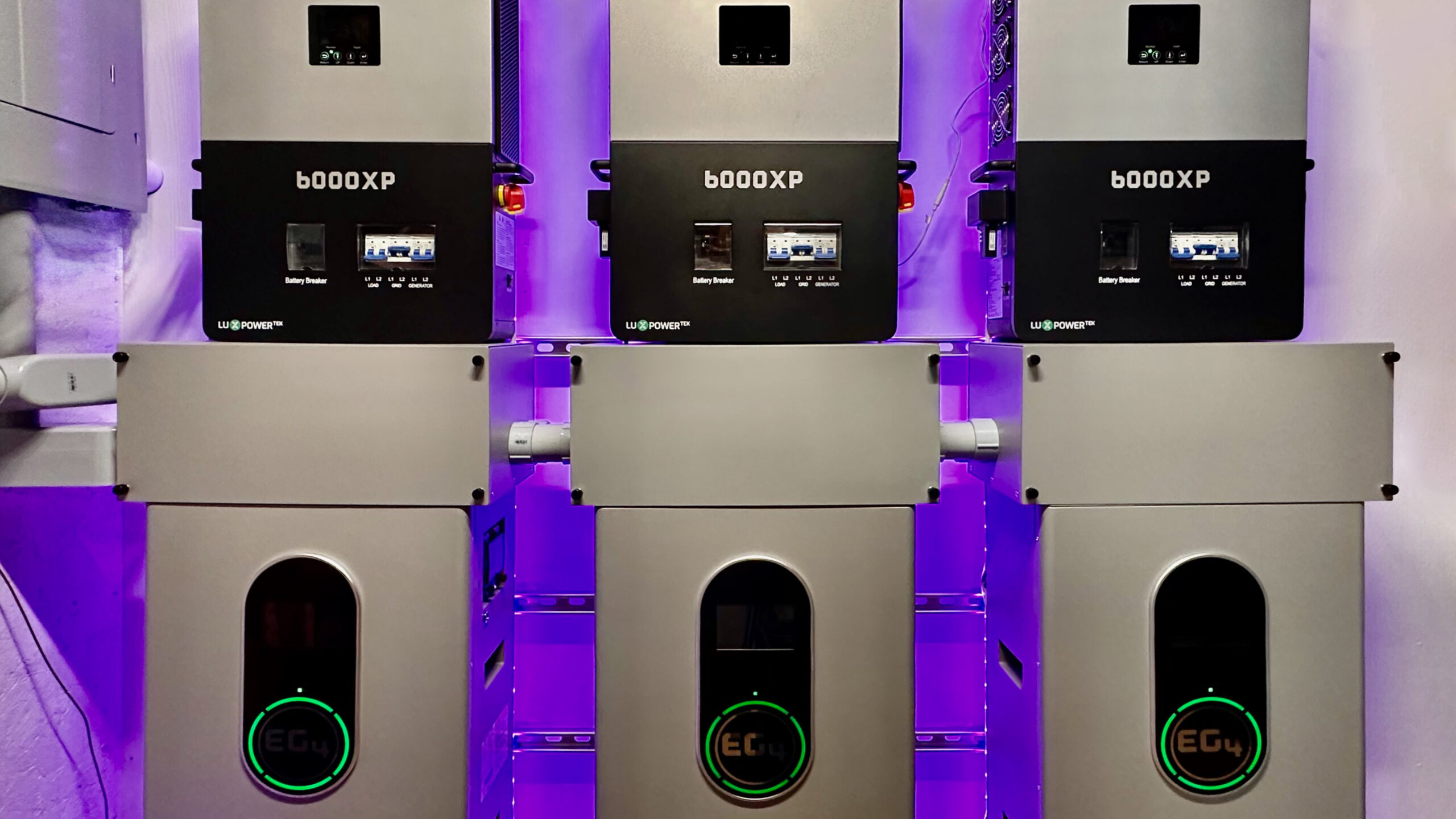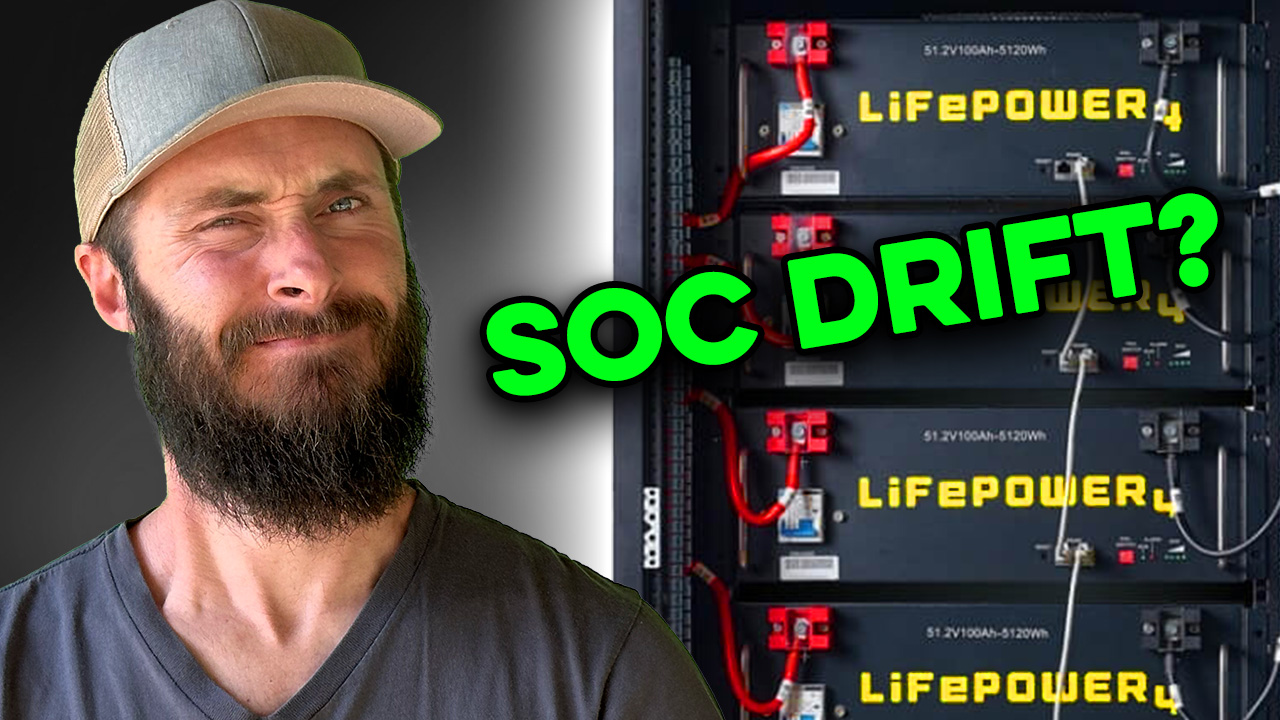Lithium SOC Drift Happens
State of Charge (SOC) drift is a common issue you might face with your EG4 LifePower4 batteries. Over time, these reliable batteries may not charge up to 100%, leading to inaccurate SOC readings and inefficiencies in your system. The good news is that this problem is fixable with the right approach.
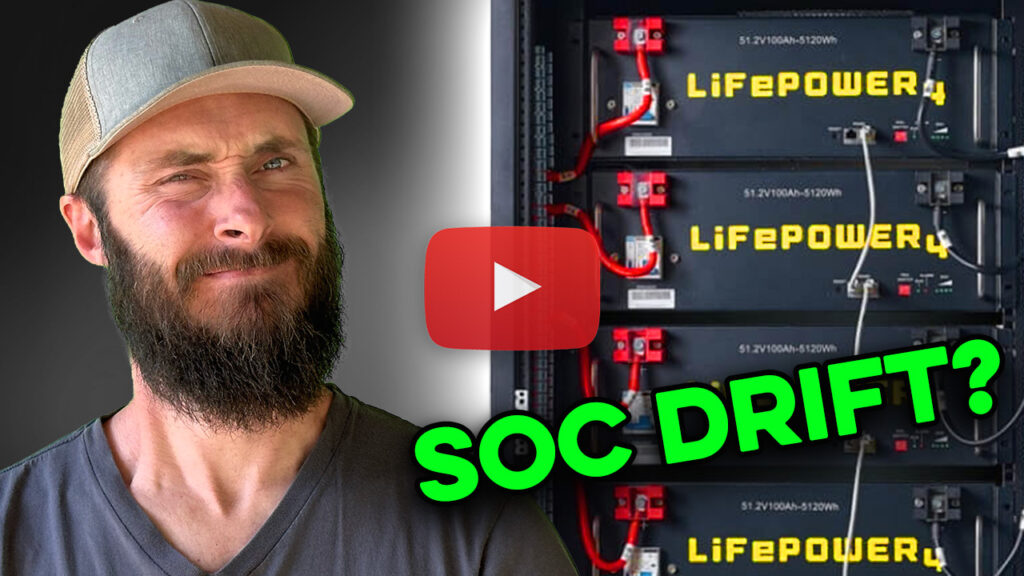
Understanding SOC Drift in Lithium Batteries
What is SOC Drift?
Before we dive into fixing this problem, it’s important to understand what’s happening with your batteries. State of Charge (SOC) drift occurs when the reported battery percentage becomes misaligned with the actual energy stored in the battery bank. This happens when the battery management system (BMS) estimates charge levels based on voltage or other factors rather than precisely tracking energy in and out.
With EG4 LifePower4 V2 batteries, SOC drift can still occur even when you fully cycle them daily—from full charge to depletion and back. A major cause of this issue is how the 6000XP inverter interacts with the battery bank. If the first BMS in the set reaches 100% before the others, the inverter may stop charging prematurely. Instead of getting all batteries to 100%, it averages the SOC across the bank, resulting in drift over time. Some batteries may never fully sync to 100%, even if the system claims they have.
This issue can lead to inaccurate battery readings, premature system cutoffs, and inefficiencies in your energy management. However, with the right settings and recalibration, you can correct SOC drift and improve charge balancing to ensure all batteries are fully charged before the cycle ends.
Why Does State of Charge Drift Matter?
For those operating off-grid, your batteries are your lifeline. Whether you’re running an off-grid homestead, managing a backup power system, or optimizing your setup for efficiency, accurate SOC readings are crucial. When SOC drift occurs, your batteries fail to report their true charge levels, which can lead to serious power management issues.
- Underestimated SOC: Premature low-battery warnings or shutdowns, even when there’s still energy left.
- Overestimated SOC: Your system may try to draw more power than is actually available, leading to unexpected outages or battery damage.
- Unbalanced charging: If the first battery reaches 100% and signals the inverter to stop, others may never fully charge, reducing efficiency and long-term battery health.
Ensuring accurate SOC isn’t just about seeing the right number on a screen—it’s about maintaining long-term reliability and performance in your off-grid power system.
Let’s Get Started: Fixing SOC Drift
If you’d rather watch a step-by-step demonstration, check out my video where I walk through the entire process visually.
Step 1: Head Over to the EG4 Monitor Site
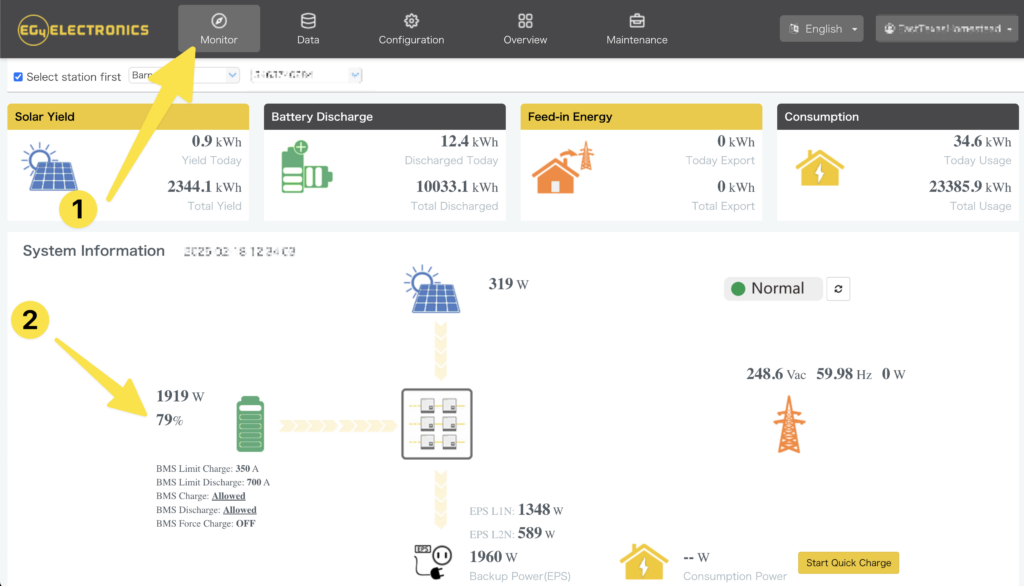
- Go to the monitor tab of the EG4 Monitor site.
- Check your SOC—Mine was 95% after an overnight charge.
- Navigate to Maintenance: Click over to the maintenance section in your settings.
- Switch to the Old Settings Page: Some adjustments require the older interface.
- Find the Master Inverter Settings: This shows the primary control settings.
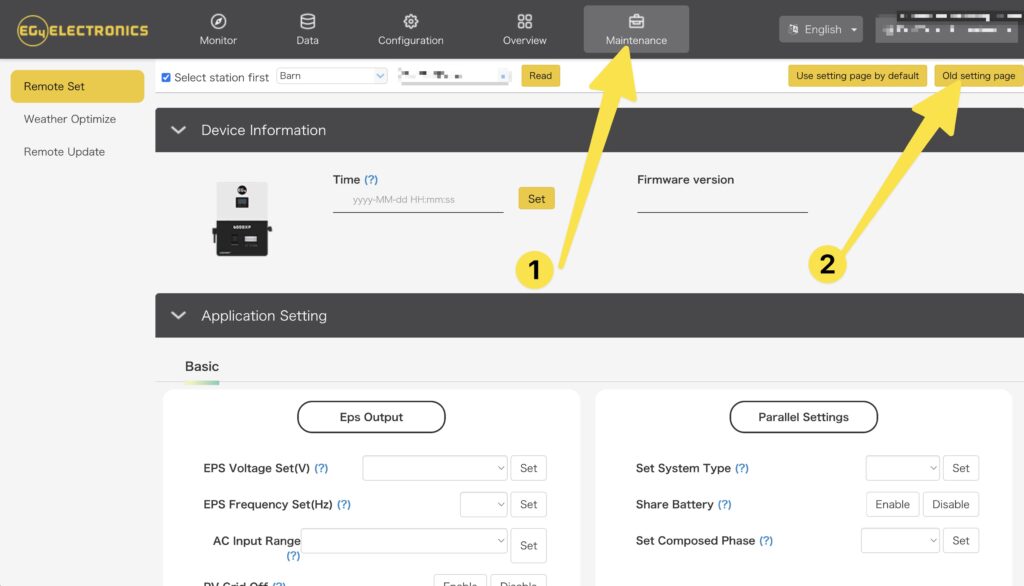
Step 2: Change Battery Setting to Lead Acid
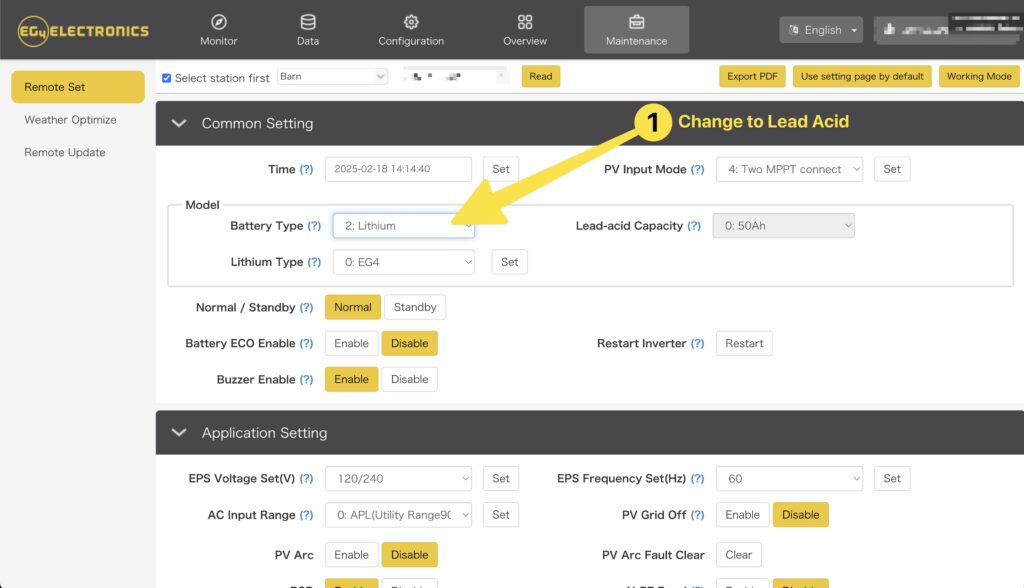
- Switch from Lithium to Lead Acid: This allows you to manually set the charge voltage.
- Set the Correct Charge Voltage: Adjust it to 57V for a full, balanced charge.
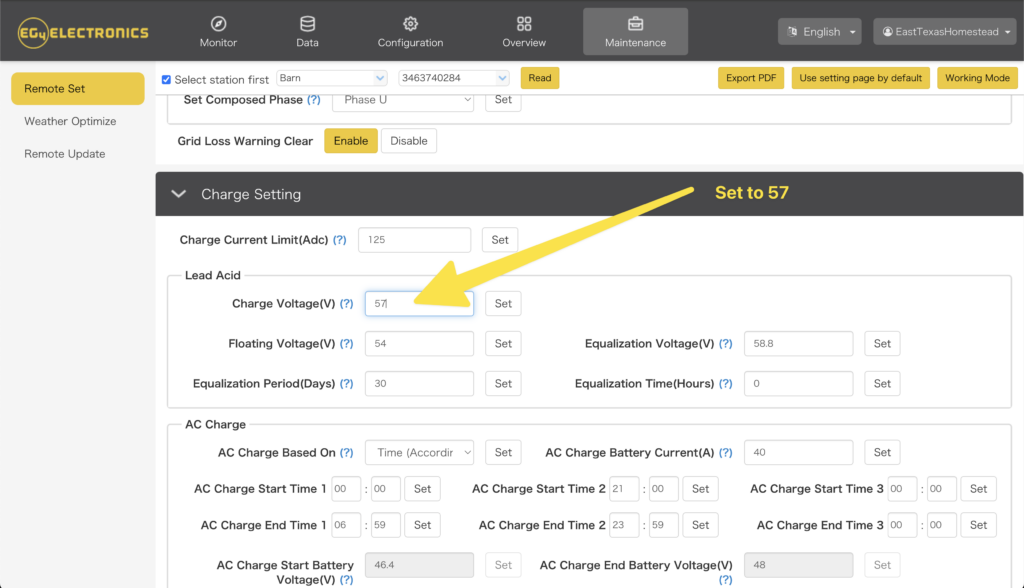
Step 3: Hit Quick Charge
- Initiate Quick Charge: This starts a charging cycle at 57V.
- Ensure All Inverters Are Synced: If you have multiple inverters, repeat for each one.
Step 4: Check Progress and Adjust
- Monitor the charge process to confirm it’s reaching full charge.
- Re-calibrate SOC: Let the system recognize a full charge at 57V.
“By pushing it to 57 volts, it allows the BMS to go, ‘Okay, so this is what 100% looks like.’”
Step 5: Revert Settings Back
- Switch back to Lithium: Once fully charged, change back from Lead Acid to Lithium.
- Set EG4 Protocol: Ensure the system properly recognizes the EG4 profile (often setting it to ‘0’).
- IMPORTANT: Sometimes, this action sets other settings to default. Be sure to check any charging settings like Discharge Current Limit(Adc) and AC first Start Times.
Wrapping Up
By now, your EG4 LifePower4 batteries should be at 100% SOC, properly balanced, and ready for optimal performance. This process should keep things running smoothly for another six months before needing a recalibration.
Shoutout to Gavin Stone from DIY Homestead for the valuable tip on fixing this issue. If you found this guide helpful, consider using my affiliate link when purchasing your next batch of batteries or equipment from Signature Solar—you’ll save money, and I’ll appreciate the support!
Living off-grid isn’t always easy, but with the right tools and knowledge, it’s manageable and rewarding. Stay charged and be prepared for whatever life brings!
As always, this is Eric with East Texas Homestead, urging y’all to live faithfully and prepare thoroughly for good times or bad. Catch y’all in the next post!
For more insights, check out other posts or reach out directly. Don’t let your journey end here!
Happy Charging!
Eric
Recent Posts
Spring 2025 Signature Solar Discount Code – 5% OFF EG4 6000XP Inverter (Limited Time!)
Looking for a Signature Solar discount code that works in 2025? Want to to save money on your next solar inverter purchase? You’re...
Parallel EG4 6000XP Install with EG4 WallMount Batteries
Welcome to the Ultimate DIY Off-Grid Solar Build For Beginners! If you’re planning an EG4 6000XP Install, this step-by-step guide will walk you...
How to Fix EG4 LifePower4 SOC Drift
Lithium SOC Drift Happens State of Charge (SOC) drift is a common issue you might face with your EG4 LifePower4 batteries. Over time,...


